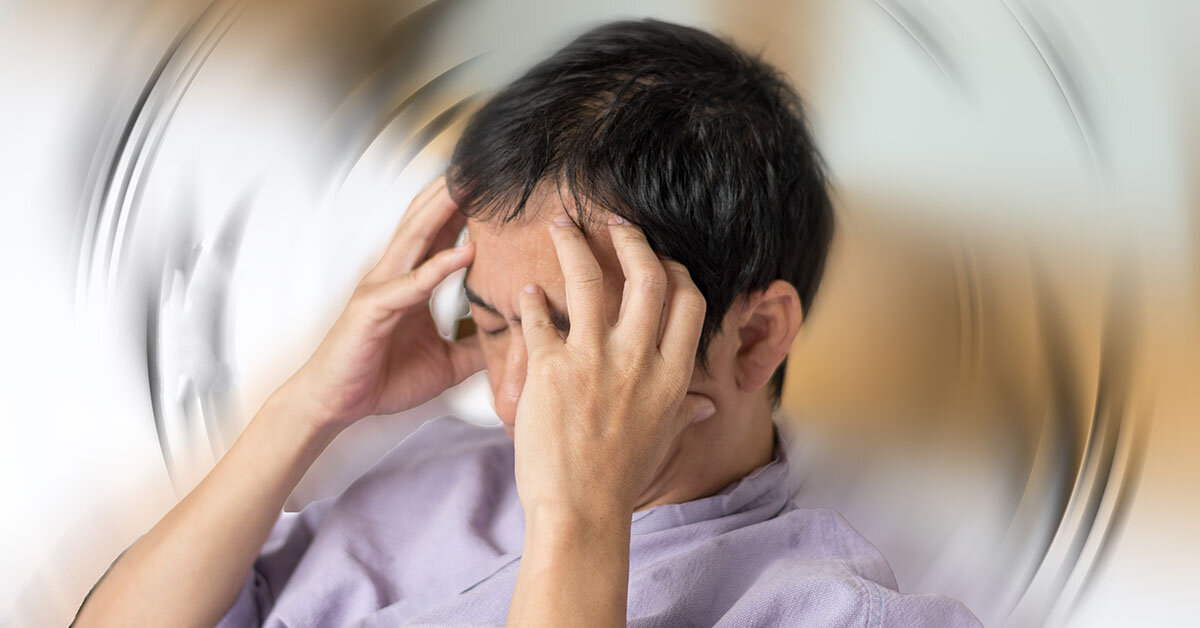
Vestibular Migraine
Vestibular migraine also known as the “Dizzy Migraine” is a common migraine variant
What is vestibular migraine?
Vestibular migraine is characterised by dizziness, vertigo attacks, nausea, loss of balance, hearing loss, motion sickness, light and sound sensitivity, neck pain and anxiety/panic attacks. It has been reported that 40% of migraine patients suffer from vestibular symptoms during a migraine, with or without severe head pain. More common in females, vestibular migraines last from a few seconds to 3 days and patients usually have no signs of abnormal vestibular function between attacks.
What causes vestibular migraine?
The vestibular system is a sensory system that is responsible for providing our brain with information about our movement, our head position and where our body is in space. It is also involved with motor functions that allow us to keep our balance, keep our head and body stable during movement, and maintain posture. The vestibular system picks up information about head position, movement and posture from the inner ear and relays this information to the brain stem and the cerebellum. This information is interpreted and acted on by many parts of the body including our eyes, ears and muscle systems.
In patients with vestibular migraine, the normal sensory information from the vestibular centres becomes amplified in the brainstem leading to over excitability and sensitisation. There is a genetic tendency to inherit this sensitisation and therefore vestibular migraines.
The team at Auckland's new Headache & Migraine Clinic have specific training in vestibular migraines, and are here to help you.

Case study - vestibular migraine
Mrs K, 64-year-old woman was referred to the Headache and Migraine Clinic for assessment of migraines with severe associated dizziness. She had a long history of migraines with aura (1-2 per year) since age 17. She had been diagnosed with Benign paroxysmal postural vertigo (BPPV) 5 years ago and had been treated successfully with the Epley manoeuvre at that time and as required intermittently when the symptoms returned. 7 months ago, she started suffering from severe dizziness attacks which she described as of severe spinning, with feelings of motion sickness and frequent vomiting. These attacks felt different to her previous bouts of BPPV and would last 24 hours. Mrs K was confined to her bed, unable to function or work, frightened to leave home, or drive anywhere. She had to move painfully slowly when getting up or turning her head, she was unable to sleep on her right side. Following the attack, she would feel “off” for the following week. These attacks started off as one per month but had increased in frequency to 5 attacks per month. Mrs K’s life was on hold, she was experiencing anxiety and fear as the treatment she had received in the past for BPPV was not working. She was on a waiting list to see a neurologist, but wanted to try The Watson Headache Approach to see whether her worsening migraine symptoms could be attributed to her cervical spine.
During the migraine assessment we were able to reproduce familiar migraine head pain, Mrs K had a distinctive pattern of dysfunction in her upper cervical spine which was causing sensitisation of her brainstem – “the engine room” of headache and migraine. Her gut and dizziness symptoms were likely linked to her migraines through the termination of the vagus and vestibular nerve connections in the brainstem.
Mrs K was completely free of her dizziness symptoms following 4 Watson headache treatments, which were delivered over 2 weeks. She started to feel easing of dizziness after the very first session. She was elated to feel “normal” again. She returned for a follow up appointment 3 months later, still completely free of dizziness attacks. She went on to see a neurologist who confirmed the diagnosis of vestibular migraine.
Symptoms of vestibular migraine
Internal vertigo- a false sensation that you are moving
external vertigo- A false sensation that the environment is spinning around
head pain either before, during or after vertigo attack
Sensitivity to light and sound
nausea and vomiting
temporary hearing loss or tinnitus
Light headedness
Loss of balance
Difficulty with fast moving visual stimulus for example scrolling through pages quickly
What are triggers for vestibular migraines?
There are many ‘triggers’ in common for all types of migraines and some common triggers include:
History of head trauma, underlying neck problem
Vasodilators (some heart medication like calcium channel blockers, aspirin and nitroglycerine)
Skipping meals
Weather changes
Dehydration or insufficient clear fluid (water) intake
Sleep deprivation
Stress
Excessive afferent stimuli (eg. flashing lights, strong odours)
Hormonal changes, monthly cycle, contraception
menopause
Certain foods – chocolate, caffeine, aspartame (artificial sweetener), sugar, processed meats, foods containing lots of colorants and preservatives like MSG
Genetics – there is a family history of migraines in about 60% of cases, suggesting a hereditary factor exists.
How are they Diagnosed
Vestibular migraine can be challenging to diagnose, and relies on a thorough examination of the vestibular system, auditory system, brain imaging and by ruling out other possible causes of vertigo. There is a long history of relationship between the neck and the vestibular system. Nerve messages from the eyes, vestibular system and the neck connect in the brainstem and contribute to the reproduction of vertigo symptoms.
Medication for migraine
Vestibular migraine is treated medically in the same way as other types of migraine with medications like sumatriptan which act to abort a migraine or preventative medications like anti depressants and beta blockers. Abortive medications like sumatriptan act to ‘desensitise’ the brainstem if taken in the early onset stage.
Our approach
Research has shown that the upper cervical spine plays a significant role in sensitising the brain stem. With the close proximity in the brainstem of nerve pathways from both the cervical spine and the vestibular system and the reporting of head and neck pain as a symptom of vestibular migraine, your upper cervical spine could be the cause. of your vestibular migraines. To find out whether your neck is causing your vestibular migraines, have your upper cervical spine assessed by a skilled practitioner.
Our approach involves finding the neck segments responsible, treating them, and desensitising the brain stem for long term results.
